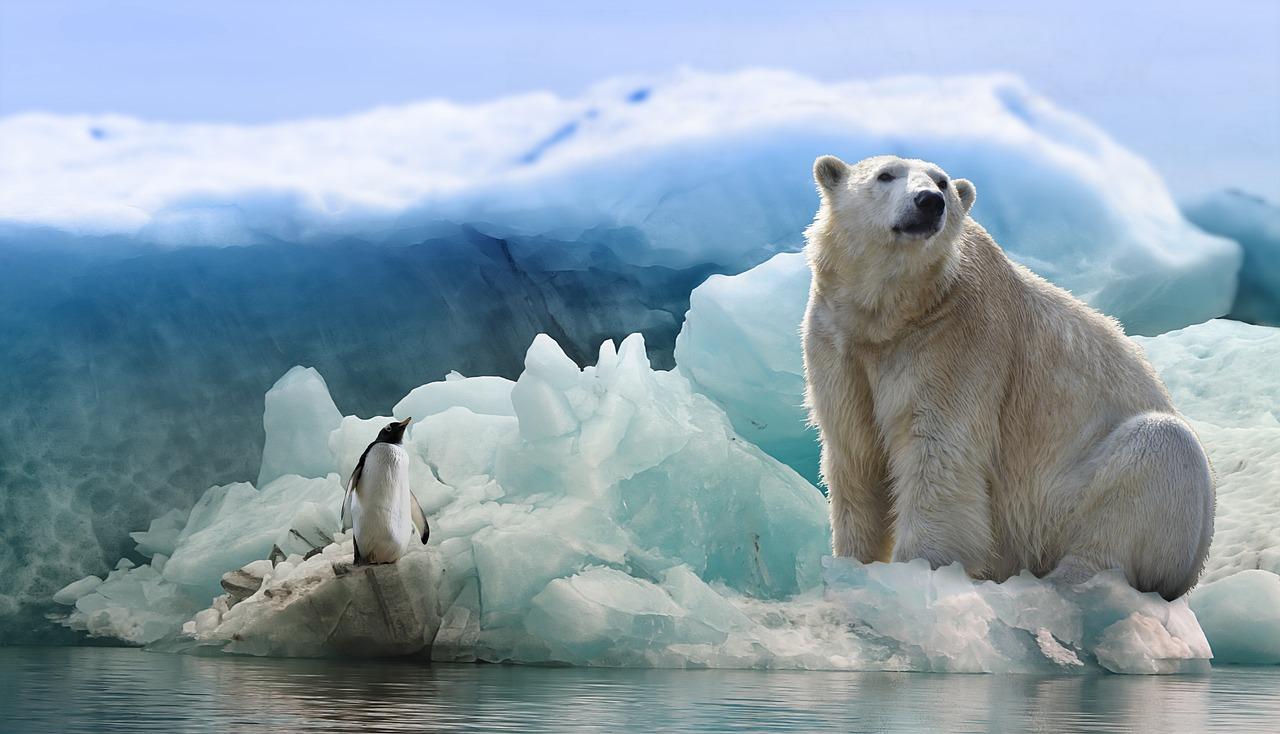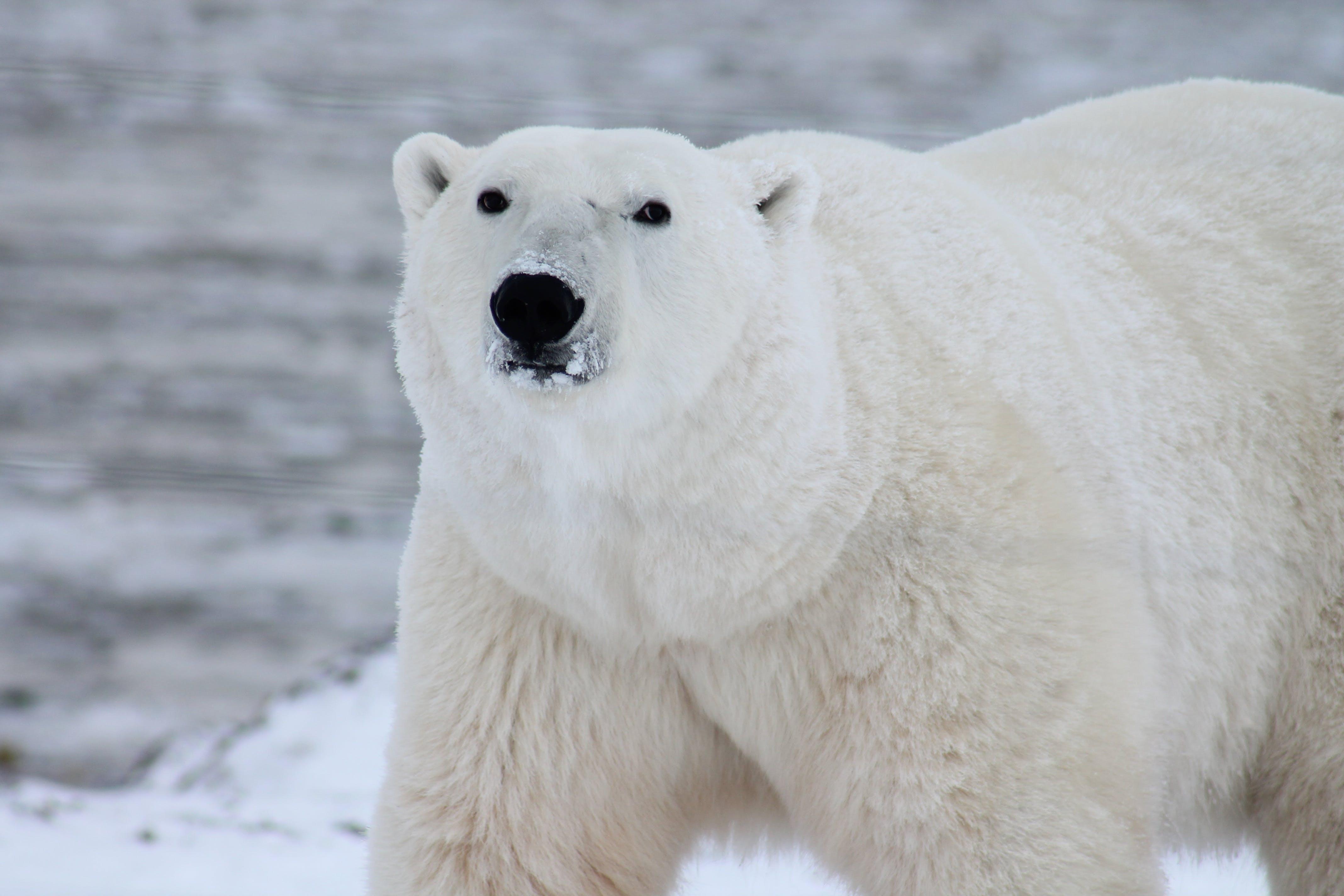Polar bears, the majestic kings and queens of the Arctic, never fail to captivate our imagination with their icy habitat and incredible adaptations. These incredible creatures have long been a symbol of power, resilience, and beauty. From their unique physical attributes to their impressive hunting skills, there’s so much to learn about these incredible creatures. In this blog post, we’ll delve into 5 interesting facts about polar bears that will surely leave you in awe. So, get ready to dive into the frozen world of polar bears and discover some amazing tidbits about these Arctic giants.
1. Birth of a Polar Bear, did you know that a female polar bear is called a sow? Well, here’s another interesting fact about them – polar bears give birth to their adorable cubs during the depths of winter! Talk about defying the odds, right? These resilient mothers dig snow dens in which they give birth and raise their cubs until spring arrives.
2. The Arctic’s Apex Predators – Polar bears reign supreme as the largest land predators on Earth. With their powerful limbs and massive paws, they can swim, run, and pounce with astonishing agility. Their expert hunting skills are mainly focused on seals, their primary food source. These bears wait patiently near breathing holes in the ice, then use their acute sense of smell to detect seals and swiftly catch them when they emerge for air.
3. White Camouflage – Polar bears are easily recognized by their iconic pure white fur, but did you know that their skin is actually black? Beneath their lustrous outer coat lies a layer of black skin, which helps them absorb and retain heat from the sun. This adaptation allows them to blend seamlessly into their icy surroundings, making it easier for them to sneak up on their unsuspecting prey.
4. Survival Experts – Polar bears are well-adapted to survive in harsh Arctic conditions. Their thick layer of blubber provides insulation and helps them stay buoyant in the water. Their large, strong claws are perfect for gripping the ice while hunting or climbing. Additionally, they have a special layer behind their eyes that help reduce glare from the sun, aiding their vision in the bright, reflective environment.
5. Eco-Warriors – Beyond their remarkable physical attributes, polar bears also play a vital role in maintaining the delicate balance of the Arctic ecosystem. As apex predators, they help regulate the populations of their prey species, ensuring the health of the entire food chain. Their survival is intimately connected to the health of the sea ice, which is rapidly diminishing due to climate change. By studying and protecting polar bears, we can gain valuable insights into the impacts of climate change and work towards preserving the Arctic ecosystem for generations to come.
Join us as we explore these interesting facts and more about the fascinating lives of polar bears. Let’s dive deeper into the cold world and unravel the secrets of these magnificent creatures.
What Are 5 Interesting Facts About Polar Bears
Polar bears are fascinating creatures that inhabit the icy regions of the Arctic. These magnificent beasts are built to withstand the harshest conditions, and they possess some truly intriguing characteristics. In this section, we will uncover five captivating facts about polar bears that will leave you in awe.
Fact #1: Polar Bears Are Nature’s Ultimate Swimmers
While most bears aren’t particularly fond of the water, polar bears are exceptional swimmers. In fact, they are built for aquatic life. With their streamlined bodies, powerful front paws, and partially webbed feet, these bears can effortlessly glide through the frigid Arctic waters. They can swim long distances, reaching speeds of up to 6 miles per hour!
Fact #2: Polar Bears Have a Thick Layer of Blubber to Keep Warm
Living in sub-zero temperatures requires some serious insulation, and polar bears have got it all figured out. Beneath their white fur, these bears are equipped with a thick layer of blubber that can measure up to 4.5 inches in thickness. This blubber acts as a natural coat, keeping them warm and providing buoyancy while swimming.
Fact #3: Polar Bears Have Black Skin
Contrary to their white fur, polar bears actually have black skin. This may seem counterintuitive, but it serves a purpose. Their black skin helps to absorb and retain heat from the sun, acting as a natural form of insulation. Additionally, the black color aids in camouflaging the bears against the dark background when viewed from underwater, making them stealthy hunters.
Fact #4: Polar Bears Have a Superb Sense of Smell
Polar bears possess an extraordinary sense of smell, which plays a vital role in their survival. They can detect the scent of prey or seals from miles away, even beneath layers of ice and snow. This exceptional olfactory sense helps them locate breathing holes and locate potential meals in vast, icy landscapes.
Fact #5: Polar Bears Have Transparent Fur
Although polar bears appear white, their fur is actually translucent. Each hair is hollow, and it reflects light, creating the illusion of a white coat. This adaptation allows the bears to camouflage seamlessly within their icy surroundings, blending in with the snow and ice to sneak up on unsuspecting prey.
Now that you’re armed with these intriguing facts about polar bears, you have a deeper understanding of their remarkable adaptations and survival mechanisms in the Arctic wilderness. These fascinating creatures continue to captivate scientists and nature enthusiasts alike, showcasing the wonders of our natural world in the most unpredictable and challenging environments.
FAQ: Polar Bear Fun Facts
Polar bears are fascinating creatures that captivate our imagination with their majestic presence and icy kingdom. If you’ve ever wondered about the fascinating aspects of polar bears, you’re in for a treat! In this FAQ-style blog post, we’ll explore some intriguing questions and reveal five interesting facts about these Arctic icons. Get ready to dive into the world of polar bears and uncover some exhilarating insights!
What’s the Proper Term for a Female Polar Bear
Despite our natural inclination to refer to all female animals as “females,” the female polar bear actually has a specific name: she is called a “sow.”
What Makes Polar Bears So Fascinating? Tell Me Five Interesting Facts!
Get ready to have your mind blown by these extraordinary polar bear facts:
Fact #1: Masters of the Arctic
Polar bears are the undisputed rulers of the Arctic, perfectly adapted to their icy habitat. With their specialized fur, layer of blubber, and large paws, these magnificent creatures can brave the harshest cold and swim long distances without breaking a sweat.
Fact #2: The Art of Scream
If you ever hear a bear scream, don’t be fooled into thinking you stumbled upon a horror movie set. Bears scream for a variety of reasons, including to communicate with others, express frustration, assert dominance, or even during courtship rituals. Imagine being able to scream your emotions loud and clear!
Fact #3: Pooping in Style
When nature calls for a polar bear, they don’t let icy obstacles stop them. Yes, polar bears do indeed poop on ice! This peculiar habit ensures that their waste freezes, preserving the delicate Arctic ecosystem from contamination. It’s a classic case of “leaving no trace behind” for these Arctic kings.
Fact #4: Cute Doggy Nicknames
Pets are often treated like part of the family, and many of us can’t resist giving them adorable nicknames. Well, guess what? It’s absolutely acceptable to call your furry friend “baby”! So, go ahead and shower your dog with all the love and affection, baby!
Fact #5: A Bear Family Affair
While polar bears are typically solitary creatures, they do exhibit a sense of family values. Mother bears, known as “sows,” nurture their cubs for about two and a half years, teaching them essential survival skills before venturing off on their own. Family time takes on a whole new meaning in the chilly Arctic!
Do Polar Bears Sweat
Surprisingly, polar bears don’t sweat like humans do. Their bodies are equipped with an adaptiveness that allows them to cool down through external means. When the weather heats up, they regulate their body temperature by either swimming in cold water or simply rolling around in the snow, acting as a natural air conditioning system. Who needs human-style sweat glands when you’ve got Arctic cooling techniques?
Do Polar Bear Mothers Consume Their Cubs
Thankfully, polar bear mothers are not stealthy cannibals. Although it may sound gruesome, you can rest assured that they do not eat their cubs. In fact, polar bear mothers exhibit exceptional care and tenderness towards their little ones. They protect and nurture their cubs, ensuring they grow up to be strong and independent creatures of the Arctic.
Are Polar Bears Friendly
While polar bears are undeniably magnificent creatures, approaching them with open arms might not be the best idea. Unlike domesticated pets, polar bears are wild predators, and their instincts drive them to survive in a harsh environment. Respectful admiration from a safe distance is the best way to appreciate their beauty. Marveling at them through documentaries and educational media is a much safer choice.
Where Do Polar Bears Sleep
When it’s time to catch some z’s, polar bears don’t settle for anything less than a cozy spot. These Arctic sleep enthusiasts will choose various locations, including snowdrifts, ice, and even rocky shores. With the perfect blend of comfort and protection, they snuggle up and wind down, rejuvenating their energy for future adventures on the frosty tundra.
How Can a Baby Tiger Be Described
Just like the adorable puppies we can’t resist, baby tigers deserve their moment in the spotlight. These little feline wonders are referred to as “cubs.” Soft, fluffy, and irresistibly cute, baby tigers are bound to melt hearts with their playful antics. Who can resist the charm of a tiger cub?
Why Are Polar Bears Important
Polar bears play a vital role in maintaining the delicate balance of the Arctic ecosystem. As apex predators, they help regulate populations of other species, ensuring the overall health and harmony of the Arctic region. By understanding and protecting polar bears, we contribute to the preservation of an entire ecosystem and the countless other organisms that call it home.
Polar bears are truly extraordinary creatures, possessing adaptations and behaviors that make them stand out in the animal kingdom. From their icy domain to their unique family dynamics, every aspect of their existence is worth exploring. As we continue to learn more about these captivating creatures, it’s essential to remember the importance of conservation efforts to safeguard their Arctic habitat. So, the next time you encounter a polar bear fact, spread the knowledge and share the awe-inspiring beauty of these majestic Arctic icons.
Now that you’re armed with intriguing facts about polar bears, let’s embark on a journey of curiosity and discovery. Together, let’s champion the cause of these incredible creatures and spread the wonder of the Arctic wilderness.

